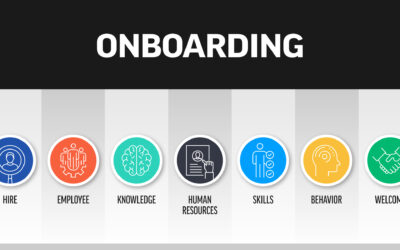In a traditional 401(k) plan, many plan administration tasks fall on the plan sponsor. These can include designing the plan, depositing contributions, keeping documents updated, complying with testing requirements, and providing required notices and information to plan participants. On top of running your business, all this extra work could be overwhelming.
These are only a few of the duties plan sponsors oversee. However, they are personally liable for all the administrative tasks to ensure that the plan is IRS compliant. Efficiently managing this could be difficult, especially while running your business. When considering the duty of a fiduciary, you not only have to ensure that the plan is running well and compliant with IRS rules, but also operating in the best interest of its participants. This includes periodically benchmarking the plan to make sure fees are reasonable and monitoring the investment lineup to identify any poorly performing funds.
With large employers, many key decision-makers of the business come together to delegate and divide the responsibilities. Any employee who takes part in this committee is also a fiduciary. Smaller employers may not have this opportunity. Luckily, there are other ways to reduce your liability.
An Employee Retirement Income Security Act of 1974 bond is required by all plans governed by ERISA, a set of laws that creates standards for qualified employer retirement plans, and regulates fiduciary action. While this bond protects the assets in the plan, it does not protect the plan administrator or fiduciaries. It covers the assets against theft, fraud, forgery, and other financial misuses. This bond aims to ensure that the retirement savings of plan participants are protected.
Protections
To understand how to reduce fiduciary liability, you need to know what a fiduciary is. A fiduciary must act to provide benefits to plan participants, ensure that plan expenses are reasonable, and operate with prudence and caution. It is essential to be aware of your plan responsibilities, so you can better work out ways to reduce your liability.
For the plan administrators/plan sponsors to protect themselves, they would need fiduciary liability insurance. It protects the sponsor from accusations of asset mismanagement and liability regarding fiduciary duties. When it comes to ERISA, fiduciaries are held personally liable for any breach of duty. While ERISA does not require this insurance, the sponsors will benefit significantly from having it if they ever fail to uphold their fiduciary duties.
On top of this, another level of coverage could be provided by an employee benefits liability policy. This type of policy is like fiduciary liability insurance in that it protects the sponsors if they make mistakes. However, this insurance policy also protects if employee benefits are not provided correctly.
Online security
Now more than ever, it is essential to maintain the safety and security of personal information online. As a plan sponsor, it would be considered a breach of your fiduciary duty not to implement the appropriate protection if something went wrong. As a fiduciary, acting in the best interest of plan participants includes protecting their private and personal information. With all the personal information contained within your plan, it is essential to have something in place to protect it.
Modern 401(k)s
The passing of the SECURE Act in 2019 opened the door for a more modern 401(k) plan that makes offering a plan much more feasible. These new plans are pooled plans with bundled service providers.
Being a pooled arrangement, it paves the way for driving down the cost for small businesses looking to offer a retirement plan. However, more importantly, they also aim to reduce the liability that plan sponsors have when starting up and running a plan. There are three main types:
- multi-employer plans,
- pooled employer plans, and
- multiple employer aggregation plans.
While these plans differ slightly from each other, they share a similar framework. They all have a group of employers who combine their assets to match the economies of scale of much larger businesses—enabling small businesses to access new opportunities and offer advanced benefits to employees.
A PIA-member benefit
The PIA 401(k) Plan is a multiple employer aggregation plan, so many businesses already are in the plan with their assets pooled together. This plan drastically reduces the sponsor’s fiduciary responsibility to the plan by delegating responsibilities to different service providers.
TAG Resources is the 3(16) Plan Administrator, as well as the 402(a) Plan Operator. It is responsible for handling plan compliance, year-end data collection, setting up plan documents, and the day-to-day plan operation.
Transamerica is the plan’s recordkeeper, which provides participants with a call center and website so they can view and manage their retirement accounts. They also provide participants with different educational materials and retirement readiness tools to help participants better prepare themselves. The fund menu for the plan is controlled by the 3(38) Investment Manager, Fiduciary-Plus. These funds are the same for all businesses within the plan, and the sponsor does not have to worry about monitoring and changing out any underperforming funds.
The last service provider within the plan is DiMatteo Group Financial Services, the plan’s financial adviser. DiMatteo Group assists with the plan design, provides education on plan features and investments to participants, and monitors the other service providers within the plan.
All service providers within the PIA 401(k) Plan work to ensure that the plan operates efficiently and within the IRS guidelines, while still providing the maximum benefit to plan participants. Having these different providers working in the plan also relieves the sponsors of most of their responsibilities—lessening their liability to the plan.
Most business owners feel they need to offer a retirement plan to their employees to help attract and retain them, but they are hesitant because of the high costs and difficulty running and remaining compliant. Now, there is a solution with the PIA 401(k) Plan. This program includes lower costs, easier operations, and the lowest possible fiduciary liability.
Learning more about the PIA Northeast retirement plan solution. If you are a PIA member outside the PIA Northeast footprint, you can find more information about the PIA 401(k) plan here. Want to know more about how to minimize your fiduciary liability on retirement plans? DiMatteo lead a PIA class: Understanding and Minimizing the Impact of Fiduciary Liability on Retirement Plans for Business, which can be found on-demand.
This article originally appeared in the June 2022 issue of PIA Magazine.

John V. DiMatteo, CFP, CPFA
John V. DiMatteo, CFP, CPFA, is a past president of PIA of Connecticut. He is CEO & financial advisor, DiMatteo Group Financial Services Inc., in Connecticut. The group serves thousands of families in the Fairfield and New Haven County areas, providing all types of property/casualty, life/health insurances, tax and accounting services and comprehensive financial planning services. Additionally, he is president of the DiMatteo Family Charitable Foundation, a not-for-profit organization dedicated to supporting many nation-wide and Connecticut-based charitable organizations.






